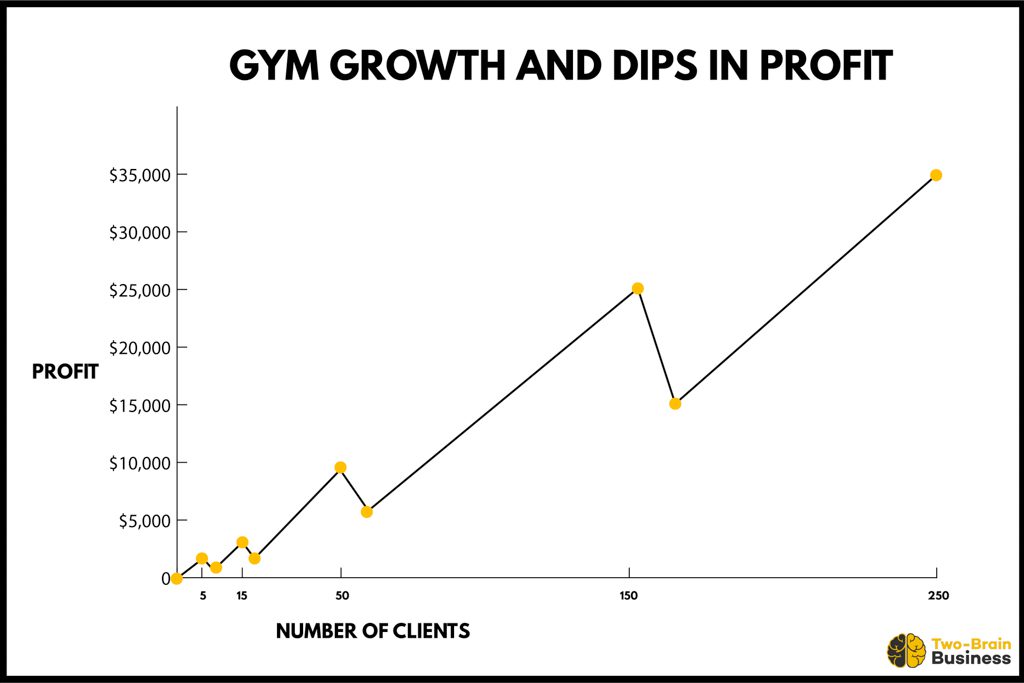If you want to get to 300 clients, you have to start with a plan to get to 150.
Simply wishing for “more” won’t work. “More” isn’t a target.
150 clients is a good target for a coach who wants to own a gym, earn $100,000 per year and make an opportunity for one to two other coaches.
Choosing 150 as a target isn’t arbitrary. We use that number as our first goal in the Two-Brain Business mentorship program for a number of reasons. Let’s start with human relationships: You can maintain a maximum of around 150 personal relationships.
Maybe if you’re a super extrovert with a trained memory, you can squeak that number up to 170.
Think about the things that happened when you opened a business: Your circle of friends shrank, you called your mom less frequently, you rushed through last-minute shopping before the kids’ birthdays. When you have five clients, you remember their kids’ names, their dogs’ names and even where they went to college. But at 50, you won’t remember some of those details. And at 150, you probably won’t remember most of them—but you’ll remember just enough.
The depth of your relationship with your client is more important for retention than almost anything else.
The average length of engagement (LEG) in CrossFit affiliates and microgyms is 7.8 months—it’s not enough time to form the deep bonds that create lasting change, and it’s not good business.
The Big Reason Gyms Fail: Their Targets Aren’t Clear
If you build a business model around 150 clients first, you’ll know exactly how much space you need, how much equipment to buy, whom to hire and what to pay them. You’ll have a clear path to earning $100,000. When you reach that point, you can scale up to 250.
Gyms that start with a goal of 150 clients can scale a little at a time. The owners find a little space, fill it, get profitable and then grow.
Every time they grow, they experience a little “gap”: Their expenses are higher and their profit is lower. That’s normal for businesses that scale: They’re investing in more staff or space or mentorship. They work through the little dip and grow larger on the other side.

But if the “gap” is too big, it turns into the Valley of Death.
This is killing many microgyms: They open a 10,000-square-foot facility with $50,000 in debt, and they’re instantly desperate to cover their monthly bills. So they offer discounts, try to force long-term contracts and generally try to sell anything they possibly can to make money. Over time, as desperation increases, some might even run bait-and-switch ads on Facebook to survive.
If you create a big “gap” for yourself when you open your gym, you’ll probably fall into it before you’re successful.
Big “gaps” are created when the gym owner doesn’t have a clear client goal. Without that goal, they can’t make a plan to meet it. The plan is always “I dunno … more?”
Expecting to jump to 300 members opens up a huge gap. The leaders on our monthly leaderboard didn’t open their first facilities to accommodate 800 members. They started with the systems, space and staff to change 100 lives, and they scaled up only when required.
You need a different plan at each stage of business. This model can be tailored to any gym because we use 1:1 mentorship with every gym owner in Two-Brain. But the key to success is having a model instead of a mystery.

